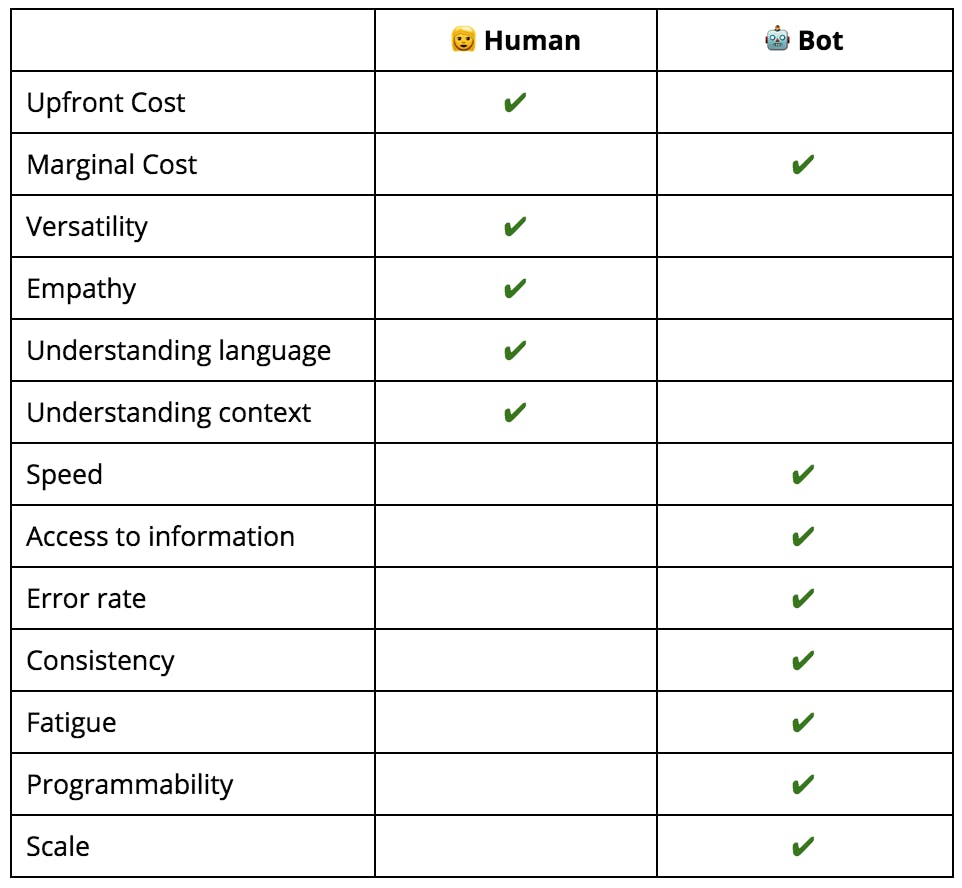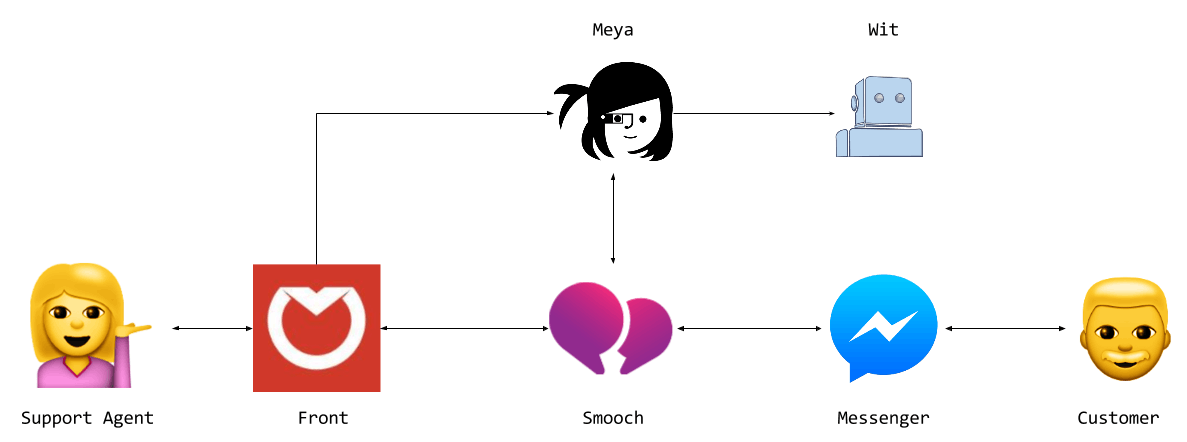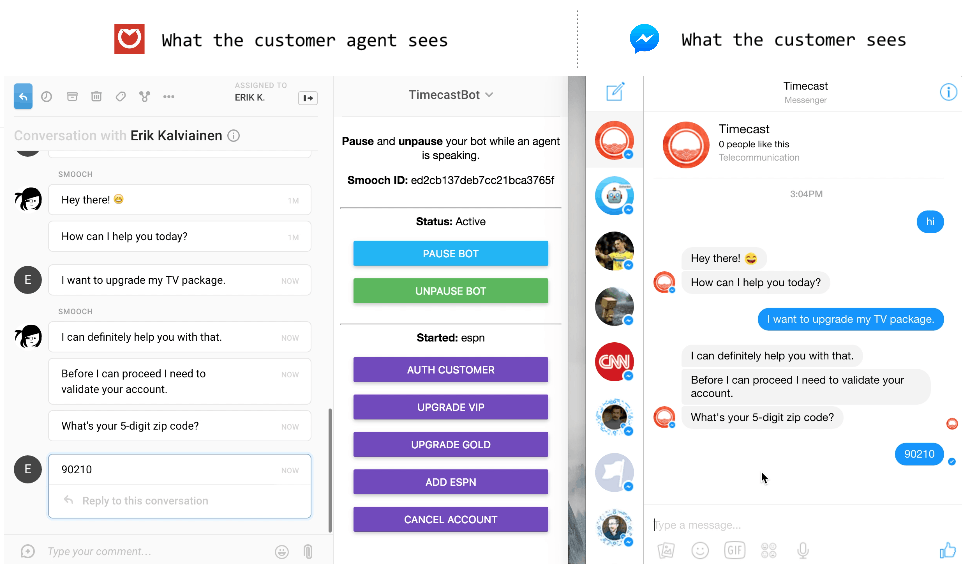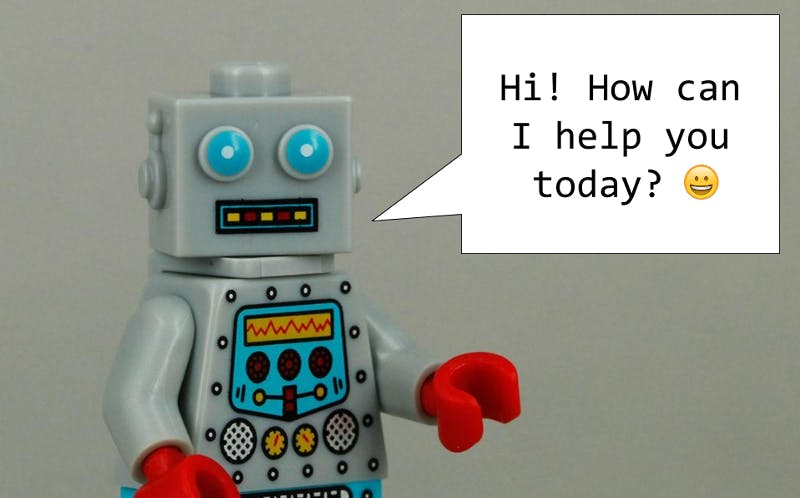Using Meya + Smooch + Front + Wit + Messenger
The intelligent assistant
Let’s revisit intelligent assistants which made a big splash last year. The most notable was M by Facebook which had many people guessing as to how much was human vs. AI:

Failing the reverse Turing test.
The trend has mostly died and the players have either pivoted (Butler is now NLP service Angel.ai), changed business models (Magic is now $100/hr human powered concierge) or disappeared completely (Where is M now?). My takeaways from this bot/human social experiment:
Many people are off-put by humans pretending to be bots.General intelligent assistants do not scale.The unit economics of brokering consumer-to-business messaging aren’t viable.Intelligent assistants are very useful and even magical.
#1, #2, #3 contributed to the failure of the intelligent assistant this time around, but the user delight associated with #4 was undeniable.
Is there a way we can play to the strengths of the Intelligent Assistant by adapting to a new domain?
Using bots to improve customer service
Other than canned responses or annoying IVRs, customer service is mostly human powered. There’s an opportunity to add bots to improve customer experience AND reduce costs at the same time.
First, a rough comparison of the strengths and weaknesses of human and bot agents:

Humans still have the edge on a few things.
It may take some time for bots to overtake the versatility, empathy, and nuance of their human counterpart, but there are some obvious short-term benefits related to speed, power, scale, and cost. By synthesizing humans and bots within chat, you can play to each of their strengths.
The stack
The Timecast demo is made up of the following tech stack:

How everything fits together.
Meya: the bot flows, code, API integrations, and NLP framework that powers the bot agent
Smooch: the messaging hub connecting Meya to Front, Facebook Messenger, and Live Chat
Front: customer support software used by human agents to respond, monitor and control the Meya bot
Wit: hosts and trains the natural language understanding model that Meya uses to route customer intent.

What the experience looks like on both sides.
The Timecast Meya bot source code is available on Github if you want to take a peek at how the bot works under the hood and how to create the Front plugin.
You can also try the Timecast demo bot out on Messenger.
Special thanks to Hart and his team at Openfolio for collaborating and providing feedback related to this post.
